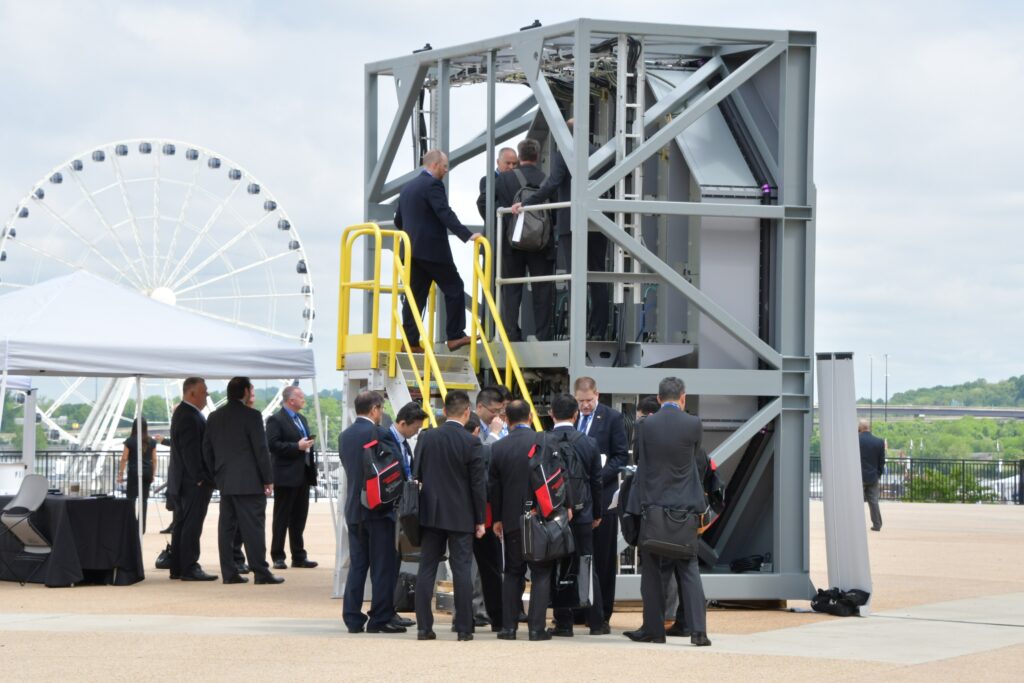
ARLINGTON, Va. — A senior Navy program executive said that the service is moving toward integration of combat systems across the fleet to achieve commonality of sensors and weapons and the benefits derived from fielding common and scalable systems.
Bob Shevock, executive director of Program Executive Office – Integrated Warfare Systems, speaking Jan. 13 at the Surface Navy Association’s annual symposium in Arlington, used the Raytheon-built SPY-6 radar as an example of commonality and scalability across numerous ship classes that would yield benefits in cost and sustainment.
The SPY-6 Air and Missile Defense Radar, being installed on the Flight III of the Arleigh Burke-class guided-missile destroyers, is also scalable into the three versions of the SPY-6 Enterprise Air Search Radar which will be installed in various configurations on most aircraft carriers plus amphibious assault ships, amphibious transport dock ships and guided-missile frigates, as well as some Flight IIA Arleigh Burke-class guided-missile destroyers, replacing a number of legacy radars.
Another example cited by Shevock is the SM-6 Standard missile, which is a refined development of a surface-to-air missile into a more versatile tactical missile with anti-ship capabilities and “a multitude of missions,” Shevock said.
He also cited the SLQ-32 Surface Electronic Warfare Improvement Program, the RIM-62 Evolved SeaSparrow Missile and the RIM-116 Rolling Airframe Missile “being integrated across a multitude of different platforms.”
He listed common technology, common parts, similar interfaces and similar training as benefits of the commonality.
Overarching Combat System
Development and proliferation of an integrated combat system is another part of the Navy’s strategy, with the ultimate goal, he said, of an overarching combat system across the fleet, with the first step being an integrated combat system across platforms.
The beginning of that first step, Shevock said, would be the merging of the Aegis Combat System — the combat system built by Lockheed Martin and installed on cruisers, destroyers and soon the future Constellation-class frigates — with the Surface Ship Defense System, the combat system built by Northrop Grumman and installed on many aircraft carriers and amphibious warfare ships.
“That really give us the leverage when we have those common combat systems to scale up to where we really have an overarching integrated combat system across the fleet and across the battle group,” he said.
Shevock reminded the audience of the original five cornerstones of Aegis: reaction time, power, availability, coverage and environmental immunity.
“After 40 years, it’s about time to add another cornerstone, and that’s agility,” he said. “We know we’re going to very quickly identify, assess and develop and deliver improvements to our Integrated Combat System to respond to the changing threat characteristics at performance, speed and scale. This ICS is going to enable us to achieve that cornerstone.”
Shevock’s program executive office has established a new program office, IWSX, responsible for planning and implementing the ICS.
- BlueHalo to Test C-UAS System on Marine Corps JLTV - April 29, 2024
- USS George Washington Deploys to U.S. Southern Command, Eventually Headed to Japan - April 26, 2024
- SECNAV Advocates Increased Legal Immigration to Increase Shipbuilder Workforce - April 23, 2024



